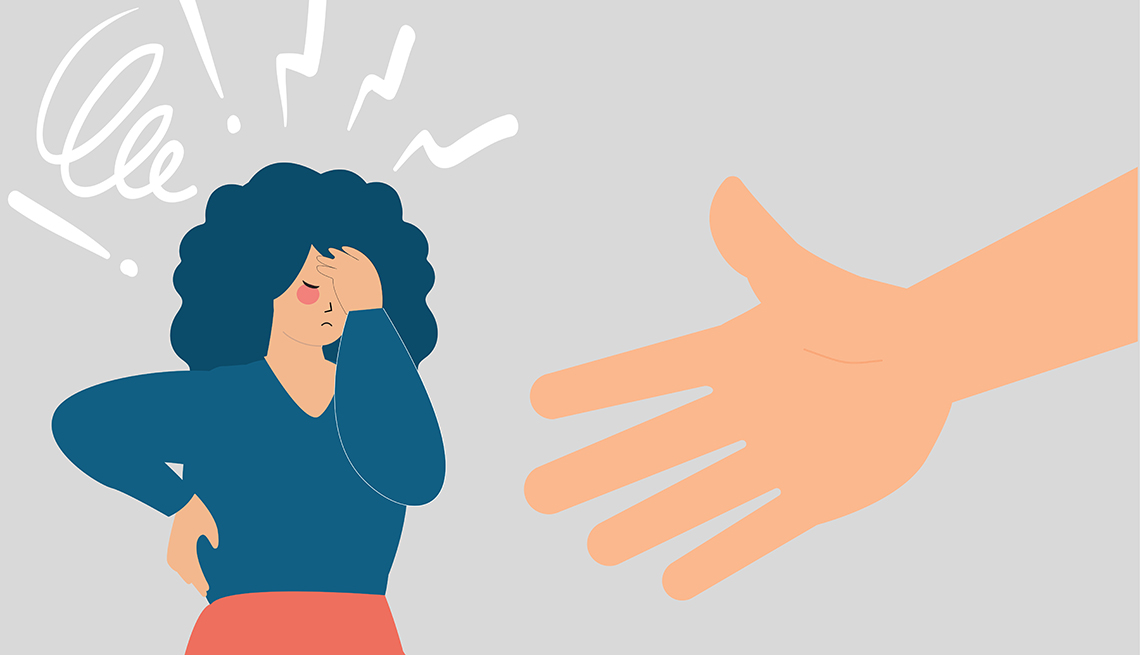
- Select a language for the TTS:
- UK English Female
- UK English Male
- US English Female
- US English Male
- Australian Female
- Australian Male
- Language selected: (auto detect) - EN
Play all audios:
It is more common than depression. The minds of anxious people flit about from worry to worry before often looping back to the first thing they worried about and repeating the cycle. That
brings them no closer to solving the problems they are ruminating about. We can say their thinking has become overrun by worries. Being anxious does not improve caregivers’ performance. To
the contrary, anxiety makes it more difficult for them to take in new information from care receivers’ doctors or case managers and then respond appropriately. It gives caregivers racing
thoughts that keep them up at night. It detracts from their quality of life. Yes, caregivers will inevitably worry and for good reasons. But to be as effective as possible, they should take
steps to avoid becoming anxious. Here are ideas for how. DISTINGUISH WORRY FROM ANXIETY Worry is usually reasonable. Anxiety is always excessive. For example, the night before one of my
mother’s 10 a.m. medical appointments, I would worry about getting her up, dressed, groomed and fed in the morning to make the appointment on time. I knew she was a world-class slowpoke. If
I became anxious about it the night before, however, then I would think of practically nothing else but how hard it would be for me. I would “catastrophize,” assuming she would not want to
wake up or go to the doctor and would protest that I was rushing her. (I certainly was rushing her.) I would be up half the night worrying about how the next morning would go and then awaken
grumpy, which did not help me be the good caregiving son. When my anxiety was most severe, ironically, I might even oversleep myself. Then we would certainly miss her appointment, to my
endless chagrin. OBSERVE YOUR THOUGHTS The best strategy for avoiding anxiety is to step back and observe your own thoughts to better judge whether your worries are reasonable or excessive,
and then try to keep the challenges in front of you in proportion — i.e., avoid making mountains out of molehills. One way is to keep a diary of whatever is on your mind. You can then read
what you have written a day or a week later and have a clearer idea of whether the worries you were experiencing deserved as much brain space as you gave them. Another is to ask for feedback
from a trusted friend or partner. There were many times when I would share my caregiving worries with my wife (a fellow psychologist), and she would point out how I was going overboard. Our
conversations also prompted me to do other things for anxiety, like more physical exercise and identifying and analyzing my anxious thoughts using cognitive behavioral therapy. CONSIDER
TREATMENT FOR ANXIETY When anxiety is so severe that you cannot self-correct, then it is time to consider some of the many effective available treatments. Most mental health therapists can
teach behavioral techniques, such as cognitive behavioral therapy (which is based on observing your thoughts) or mindfulness practices that reduce uncontrollable worry. Most primary care
providers routinely prescribe proven anti-anxiety medications. Caregiving will never be worry-free. But caregivers can recognize and control anxiety, do a better job and feel happier in the
process.







